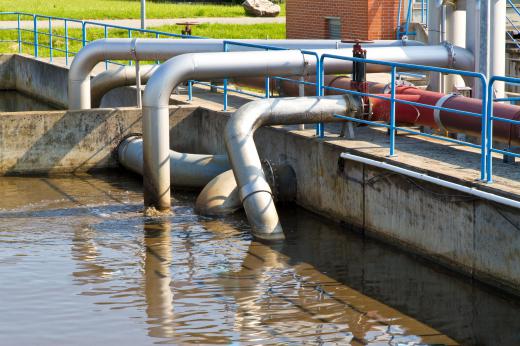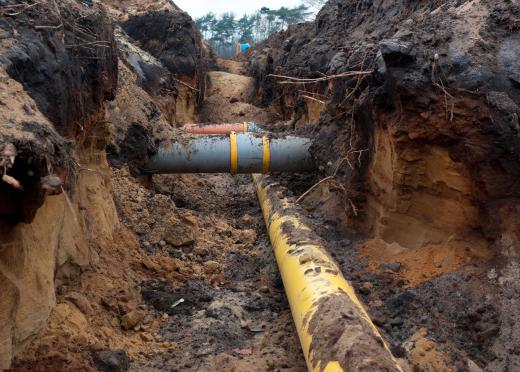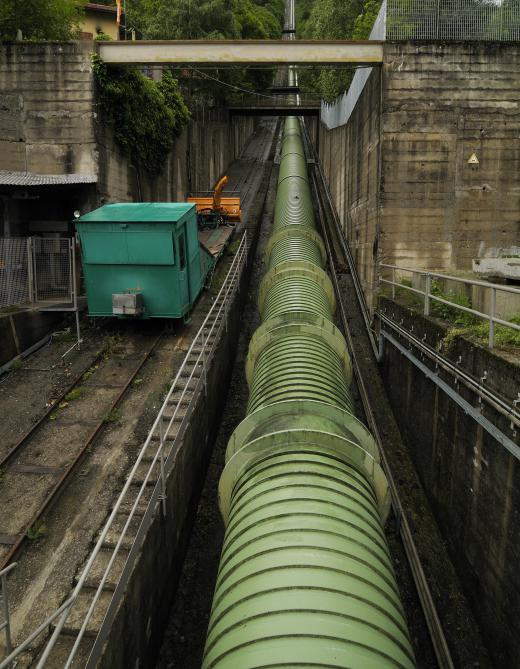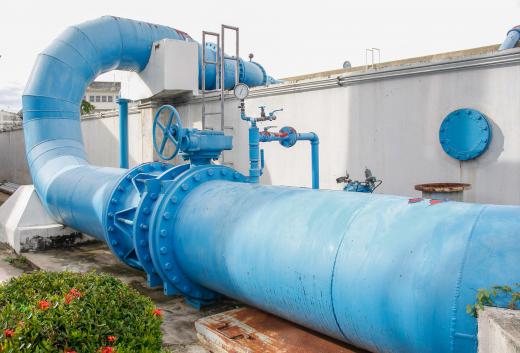Tertiary treatment is part of the treatment process which wastewater must go through before it can be discharged into the environment. The process includes four or five stages. These are preliminary, primary, secondary, and tertiary wastewater treatment; sometimes, this is followed by an additional step. There are several different types of tertiary treatment, all of which involve improving the quality of the waste to reduce its impact on the environment into which it is released.
Extensive sewage treatment is necessary due to the vast number of different contaminants which may be present in wastewater. Wastewater is generated by homes, businesses, and public buildings such as schools and hospitals, and in some areas, industrial plants as well. Sewage contains contaminants from all of these locations, as well as environmental waste from soil, rainwater, animal waste, and other waste which enters storm water systems.

The wastewater treatment process is a lengthy one. The preliminary treatment phase involves the removal of large pieces of debris via filtering. In primary treatment, water is piped into large tanks and allowed to settle to remove particulate solids. Secondary treatment uses microorganisms to remove more contaminating solids. Next, the wastewater goes through tertiary treatment, and finally, the it may go through a second settling process to remove any remaining particulate matter.

Tertiary treatment, also referred to as effluent polishing, is carried out to improve water quality. Most wastewater plants use at least one tertiary water treatment process, and some use two or more to decontaminate wastewater. Tertiary processes include filtration, lagooning, nutrient removal, and disinfection.
Filtration is a common method of tertiary treatment, with either sand or activated carbon used to filter wastewater. The water is passed through a bed of sand or charcoal, allowing particulate matter in the water to adhere to the filter medium, removing it from the water. Lagooning is a method in which water is stored for some time in man-made ponds. During this process, plants and invertebrate animals which live in the water improve water quality by ingesting remaining particulate matter.

In some locations, high levels of nutrients such as phosphorous and nitrogen must be removed from the wastewater before it can be released into the environment. This is important because if these nutrients are not removed from the water, they can provoke large-scale outgrowth of algae, causing ecosystem imbalance. Nutrient removal is performed by bacteria present in the wastewater, which convert the nutrients into forms that can be removed from the water.

The final tertiary process to be performed is disinfection, which is typically carried out with the addition of chlorine to wastewater. This process is used to kill microorganisms present in the water, to reduce the environmental impact of the waste. Water chlorination is one of the most common forms of disinfection, as it is an inexpensive and relatively simple process.
